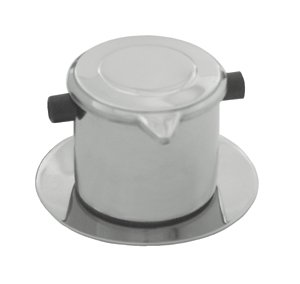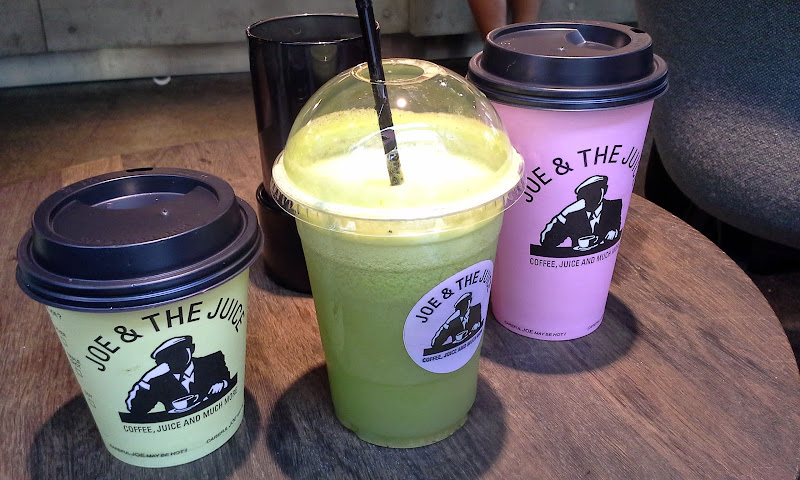 A Vietnamese coffee filter set is a highly portable coffee-making option due to its small size, light weight, and minimal pieces. It’s not just high portability that sets this brew style apart, though. When used properly, a Vietnamese coffee maker should turn out a completely distinctive brew.
A Vietnamese coffee filter set is a highly portable coffee-making option due to its small size, light weight, and minimal pieces. It’s not just high portability that sets this brew style apart, though. When used properly, a Vietnamese coffee maker should turn out a completely distinctive brew.
Falling somewhere between American coffee and espresso, Vietnamese coffee gets its uniquely strong flavor through a simple drip process that is as easy as it is satisfying.
1) Mind the grind.
The holes on a Vietnamese coffee filter set are large by general coffeemaker standards, so a coarse grind is required to keep grounds out of your coffee. If you want to drink as the Vietnamese do, you can buy Vietnam’s top coffee brand Trung Nguyen online – click here. Alternatively, choose a dark roast, such as French roast, to get the best results.
For the freshest flavor, opt for whole beans and grind at home just before brewing.
2) Remove the damper if it’s still on the filter.
The damper is the secondary filter-like piece that comes screwed inside the filter (the cup part) of the coffee maker.
3) Add coffee to the filter.
Like most coffee producers, Trung Nguyen recommends 1 tablespoon of coffee per cup of water. This means roughly 2 to 3 teaspoons for the majority of Vietnamese coffee makers. Move the filter back and forth gently to distribute the grounds evenly across the bottom of the filter.
4) Screw the damper back on.
The secret to getting a good drip through your Vietnamese coffee filter is to get the damper positioned properly. The damper should rest directly against the coffee grounds without crushing them. The issue is how you go about accomplishing this when you can’t see the coffee below the damper.
After a few uses, you’ll get a feel for how tight the damper should be. Start by screwing the damper down until you can feel the grounds start to impede it, and then give it a half a turn more.
5) Set the stainless steel filter on top of your coffee mug.
Filters are designed with curved bottoms and rings to stay in place throughout the brewing process.
6) Bring one cup of water to almost a boil.
Pour not-quite-boiling water into the filter until it is about a quarter full and let the water seep through the damper for about 30 seconds. After 30 seconds, add the rest of the water to the filter and put the lid on top to keep the heat in.
7) Wait.
Once you pour the water in, the brew process should take at least five minutes to extract the rich, full flavor characteristic of Vietnamese coffee. Peek under the lid during your first few makings to make sure the coffee is seeping slowly enough. If the water filters through in less than five minutes, you won’t be getting full flavor from the brew process.
When the water filters too quickly, it means the damper was not on tightly enough and you should further tighten it during your next attempt at brewing.
8) Pour, soften and sweeten.
You can drink Vietnamese coffee straight, and may find it extremely gratifying if you’re a person who also downs espresso shots. Traditionally, Vietnamese coffee is served with a sugary twist, though.
Instead of American milk and sugar, Vietnamese coffee is typically tempered with sweetened condensed milk. The amount, of course, is dependent upon taste, but about 2 tablespoons is a good place to start. The condensed milk can be stirred into coffee at the end or added to the cup before step five.
For a different coffee experience, try it like some Vietnamese coffee drinkers take it. Put the condensed milk in the bottom of the mug, brew the coffee, and drink without stirring. You’ll get the strong, bitter coffee first and finish off with an abundance of sweetness.
Ca phe da
When it’s hot out, try your Vietnamese coffee cold. Simply brew as normal, stirring the condensed milk into the coffee, and pour over ice.
 Coffee starts to go stale within two hours of grinding, so if you are buying coffee that comes ground, or grinding at the store, you are giving up all the flavor before you even brew up the first pot. Grinding at home on an as-needed basis keeps your coffee as fresh and flavorful as it can possibly be, and produces coffee that is fresher, smoother and overall tastier.
Coffee starts to go stale within two hours of grinding, so if you are buying coffee that comes ground, or grinding at the store, you are giving up all the flavor before you even brew up the first pot. Grinding at home on an as-needed basis keeps your coffee as fresh and flavorful as it can possibly be, and produces coffee that is fresher, smoother and overall tastier. While in Brussels recently, we discovered a great restaurant and coffee shop chain called EXKi.
While in Brussels recently, we discovered a great restaurant and coffee shop chain called EXKi. Joe & the Juice is another great chain in Oslo that has great coffee. They also have really excellent juices, if you’re into that.
Joe & the Juice is another great chain in Oslo that has great coffee. They also have really excellent juices, if you’re into that. I know what you’re thinking – freshly grated ginger root in a latte does not really sound like something that would taste good in your jokehole. Well, the joke is on you, my friend!
I know what you’re thinking – freshly grated ginger root in a latte does not really sound like something that would taste good in your jokehole. Well, the joke is on you, my friend!